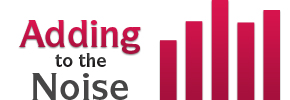The wows and woes of a Benjamin Gibbard concert

March 7, 2013
The cold was starting to numb my toes.
Tiny puffs of breath floated in the freezing air as I whispered, “It has to be soon.” I fidgeted, I craned my neck for a better view. My nerves buzzed with electric excitement. Despite the cold seeping through my wool jacket, anxiety formed small beads of sweat on the back of my neck. I’d been waiting for almost two hours, and I knew my wait would be over any minute.
I was going to meet Benjamin Gibbard.
On Nov. 2 I waited outside the back doors of Chicago’s Athenaeum Theatre with a knot in my throat and a hammering heart. I’d just attended one of Gibbard’s solo shows, and I was reeling. I’d seen Gibbard a total of six times over the past few years, four times with his band, Death Cab for Cutie, and now twice solo. The experience never got old; I felt like I had just experienced something extraordinary and unique.
However, this concert was the first time I would wait by the back door with a few dozen other fans. This concert was going to be the first time I would actually come face to face with one of my music gods.
This moment would mean the world to me. When I turned 25 later that week, it would mark seven years of Gibbard worship. The music he had created with Death Cab for Cutie and The Postal Service, not to mention his occasional solo work, had been the soundtrack to my adult years. I owned every album, every single, even a DVD or two–the word “fan” could never fully encapsulate how much I loved this man’s art.
To say I was nervous was a huge, huge understatement. As I stood in the chilly November night, clutching my boyfriend’s arm and worrying (Will he take a picture with me? Does my hair look okay? Do you think Ben will accept my proposal?), I felt almost paralyzed with tension. Any minute, a 30-something-year-old man would emerge from the theater’s back exit, clad in jeans and plaid, perhaps carrying his guitar case or clutching a scarf against the cold wind. That man, Benjamin Gibbard, would then pass through a small mob of fans, signing mementos and posing for pictures as he slowly made his way toward me, until he entered into my small atmosphere, until he came into my orbit.
What could I say to him when he finally stopped to sign my poster? Something cheesy, something empty and meaningless? No. I would not say something that Benjamin Gibbard had heard countless times and would forget within seconds of leaving my personal space. I racked my brain, I muttered to myself. What to say? I crafted my short speech to perfection in my head. I had it: “Your music helped me grow up.”
This would not be an exaggeration. I listened to my first Death Cab for Cutie album, “Plans,” as an 18-year-old girl, bright-eyed and refusing to face the impact that a traumatic childhood had over my psyche. I was broken, but I denied it. By the time I was 21, I had added more DCFC albums to my collection, most importantly “We Have The Facts and We’re Voting Yes,” and the effects of my bottled-up pain were starting to take hold. Now, at 25, I stood by a back door of a theater as a full-fledged devotee who used Gibbard’s music as a way to work my way through emotional instability and accept the inherent messiness that was Sarah. I grew up, and every song Gibbard wrote helped me along the way.
The hours passed and I had a train to catch. My excitement gave way to extreme disappointment as we turned from the theater and headed south toward the train station–I would not be meeting Benjamin Gibbard that night. The anxiety left my body and I was left thinking, “next time, next time.” I dropped my camera back into my purse and hugged my coat closer to my body. I would accept this disappointment as a small hiccup, and the train ride home would be filled with conversation about the concert I’d been lucky enough to witness. Next time, I’d be waiting by the back door to meet Benjamin Gibbard, and I’d still have this truth to utter to him: “Your music helped me grow up.”






